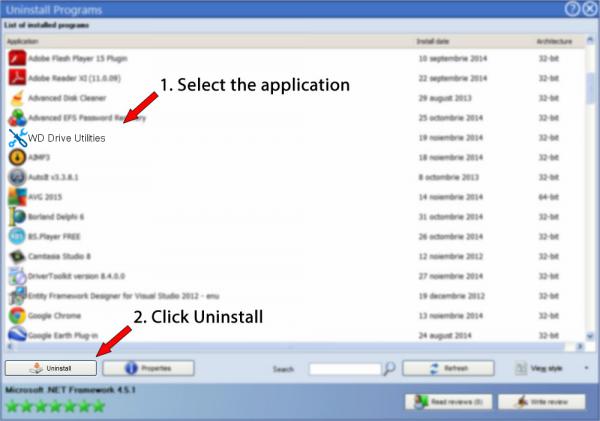
- #Wd drive utilities linux how to#
- #Wd drive utilities linux serial#
- #Wd drive utilities linux password#
- #Wd drive utilities linux download#
Hdparm -user-master u -security-erase p /dev/sda Hdparm -user-master u -security-erase-enhanced p /dev/sda If the drive DOES support Enhanced Security Erase:
#Wd drive utilities linux password#
Check to see if the password is set correctly and that security is now enabled: Hdparm -user-master u -security-set-pass p /dev/sdaĨ. Otherwise, set a temporary password "p" in order to issue the secure erase command: Repeat steps 5 and 6 if the drive is still frozen. NOTE: The drive is no longer in frozen state.ħ. After letting the computer sleep for a few seconds, wake it up and check to see if the drive is no longer in frozen state by issuing the command: Skip this step if your drive is not frozen.Ħ. Since the drive in this example is frozen, we need to unfreeze it but putting the computer to sleep with the command below.


NOTE: The drive is frozen, it supports Enhanced Security Erasing, and the estimated completion time is 50 minutes.ĥ. NOTE: For this example, we will be using /dev/sda. Find the name of the drive(s) that you want to wipe by using the fdisk command: All commands from now on will be issued as root.ģ. Attach the drive(s) to be erased and boot the computer up from the Linux LiveCD, and get to a root shell. CentOS 6.3 LiveCD DOES contain hdparm, however the Fedora 17 LiveCD DOES NOT, so your mileage will vary.Ģ.
#Wd drive utilities linux download#
Download and burn a Linux LiveCD that includes the hdparm utility. This article assumes the reader has some knowledge of the Linux Operating System.ġ. Some fast SSDs can take as little as two minutes, while traditional hard drives take about one hour per 100GB. The estimated completion time is dependent on the size and speed of the drive. Doing so may cause the drive to be in an unknown state and can possibly lead to a dead drive "bricking" or, more importantly, a data leak scenario. DO NOT remove power or disconnect data cable before the operation is completed. For safety, it is recommended that drives not intended to be wiped be removed from the system before starting the steps below. Please make sure that ALL necessary data are backed up from ALL partitions before following the steps below. The instructions in this article will destroy ALL data on the ENTIRE drive and not just a particular partition. Do not attempt the steps below via the USB interface. Do not continue if the drive is connect to the computer via a hardware RAID controller or USB/Firewire to PATA/SATA bridges. Make sure the drive is directly connected to the controller before continuing. SCSI and SAS drives are NOT covered in this article.įor general advice on wiping SSD drives, please see Important Notes!! ( information can be found on most desktops & laptops.)
#Wd drive utilities linux serial#
This is ONLY applicable to HDD & SSD drives with Serial ATA (SATA) or Parallel ATA (PATA) interface with a Manufactured Date after 2001.
#Wd drive utilities linux how to#
This article will show the user how to use the hdparm Utility to issue the Secure Erase command to an ATA interfaced hard drive. The Secure Erase command writes zeros to the user data portion of traditional hard drives or returns the cells to their original, factory state in solid state drives. This includes both traditional hard disk drives and solid state drives. Since 2001, the Secure Erase command is built into the firmware of the controller on Parallel ATA (PATA) and Serial ATA (SATA) hard drives.

However, traditional whole disk erasing utilities like Darik's Boot and Nuke (DBAN) do not work well with SSDs because the placement of data blocks is not as predictable as traditional magnetic hard disk drives. Solid State Drives (SSDs) are quickly replacing traditional, mechanical, hard disk drives due to their higher speed, lower power consumption, lighter weight, and being more shock proof.


 0 kommentar(er)
0 kommentar(er)
